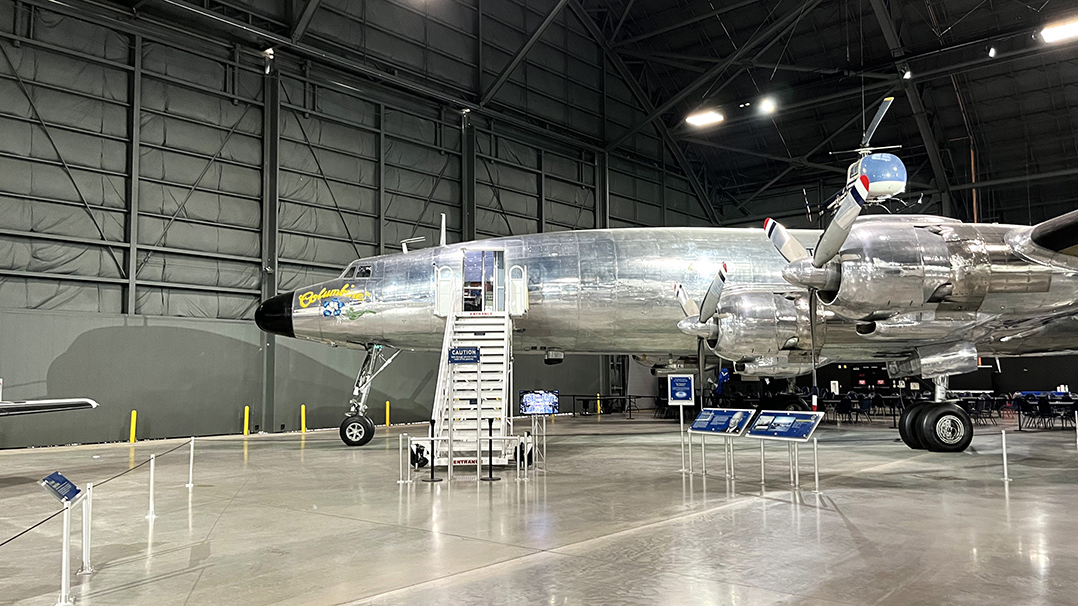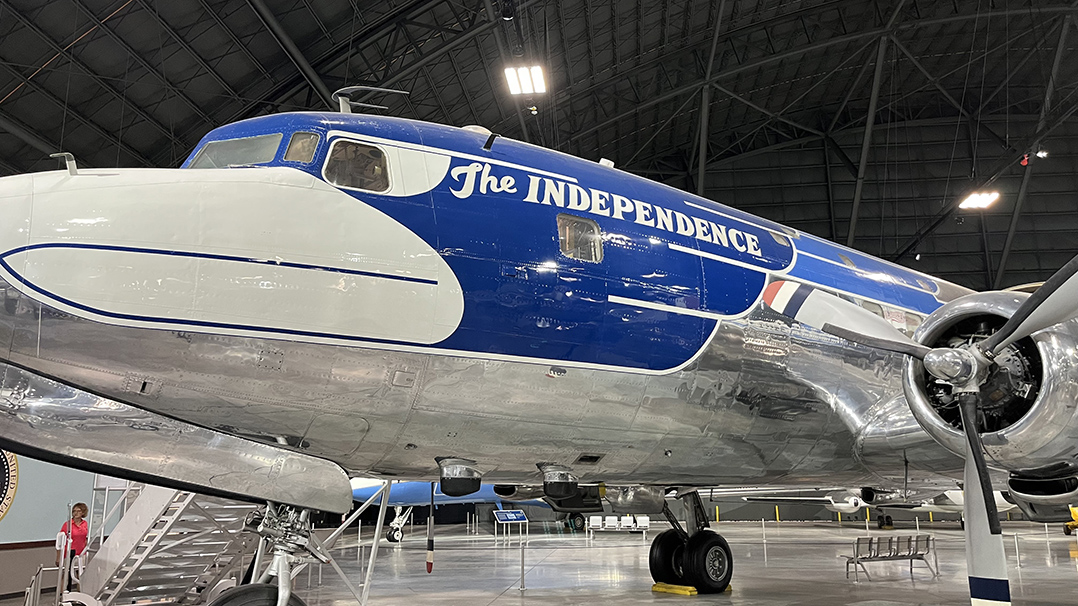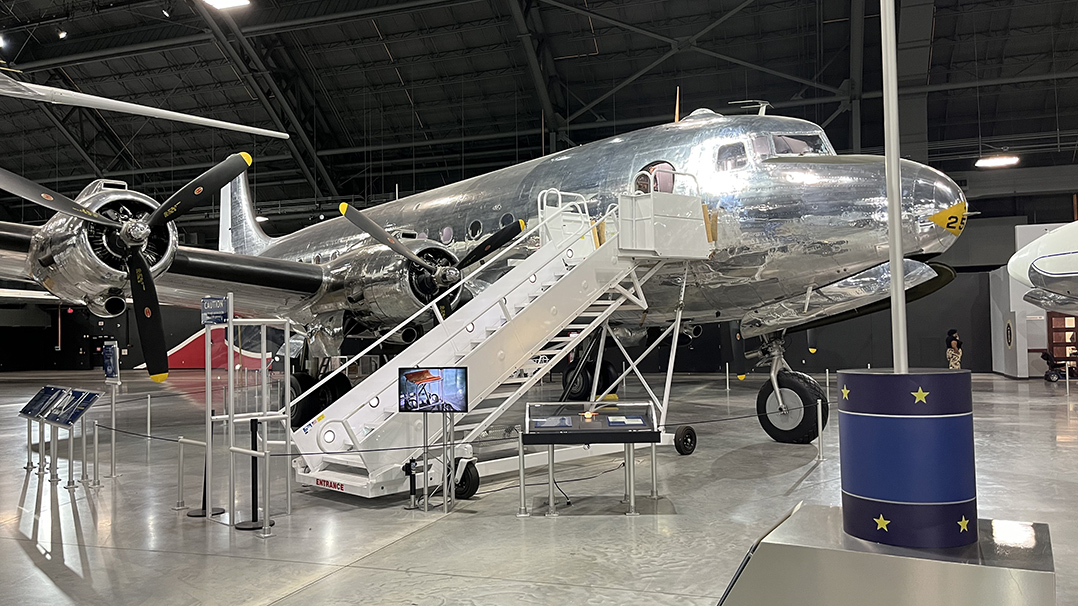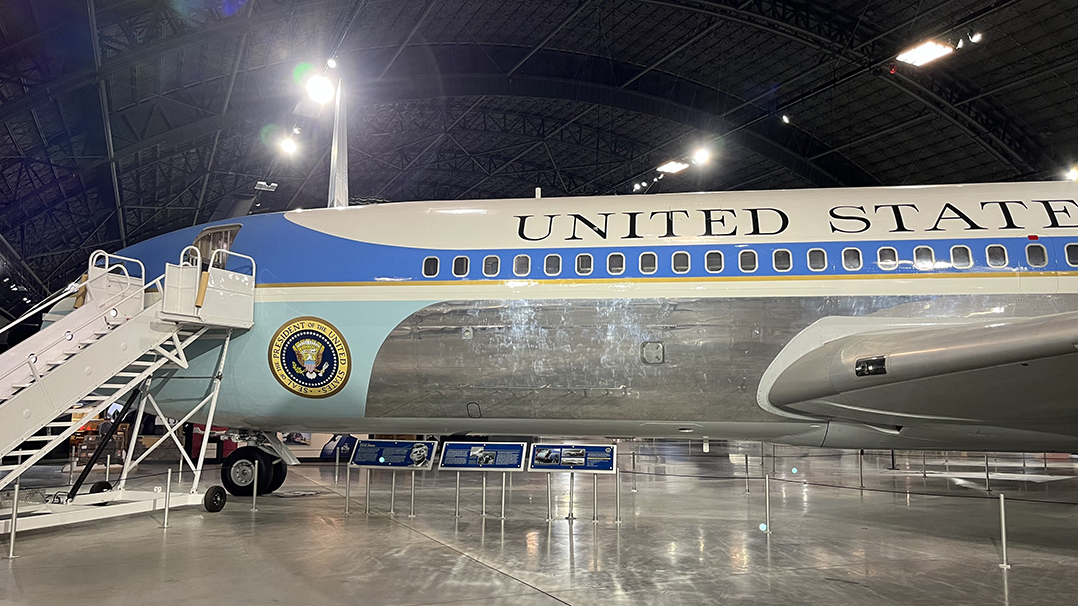Today, in our continuing visits to places within easy driving distance of Indianapolis, we make the first of three stops at the National Museum of the United States Air Force, on the grounds of Wright-Patterson Air Force Base near Dayton, Ohio. The museum, which began in 1923 as an engineering study collection, is now the world’s largest military aviation museum. More than 350 airplanes and missiles and thousands of related artifacts are displayed in four connected hangars, providing 19 acres of indoor exhibit space.
The William E. Boeing Presidential Gallery, one of the museum’s most popular exhibits, features 10 airplanes used by American presidents, four of which visitors can walk through. A Douglas VC-54C Skymaster, nicknamed “Sacred Cow,” was built for President Franklin D. Roosevelt, the first president to fly while in office. It included an elevator enabling Roosevelt to enter in his wheelchair. Roosevelt used the plane only once before he died, going to and from the Yalta Conference in February 1945. President Harry Truman then used the Sacred Cow until he received a modified Douglas DC-6, which he named “Independence” in honor of Independence, Mo., his hometown. A Lockheed VC-121E was built for President Dwight Eisenhower, who named it “Columbine” after the state flower of Colorado in honor of his wife, Mamie. A Boeing VC-137C, named “Air Force One” when the president was on board, was first used by President John F. Kennedy and painted as specified by his wife, Jacqueline. Lyndon Johnson was sworn into office on the plane after Kennedy’s assassination in Dallas. A plaque near the front of the plane explains where Kennedy’s body was placed for its return to Washington. The plane was subsequently used by Presidents Richard Nixon, Gerald Ford, Jimmie Carter, Ronald Reagan, George H. W. Bush and Bill Clinton before being retired in 1998 after 36 years of service.








